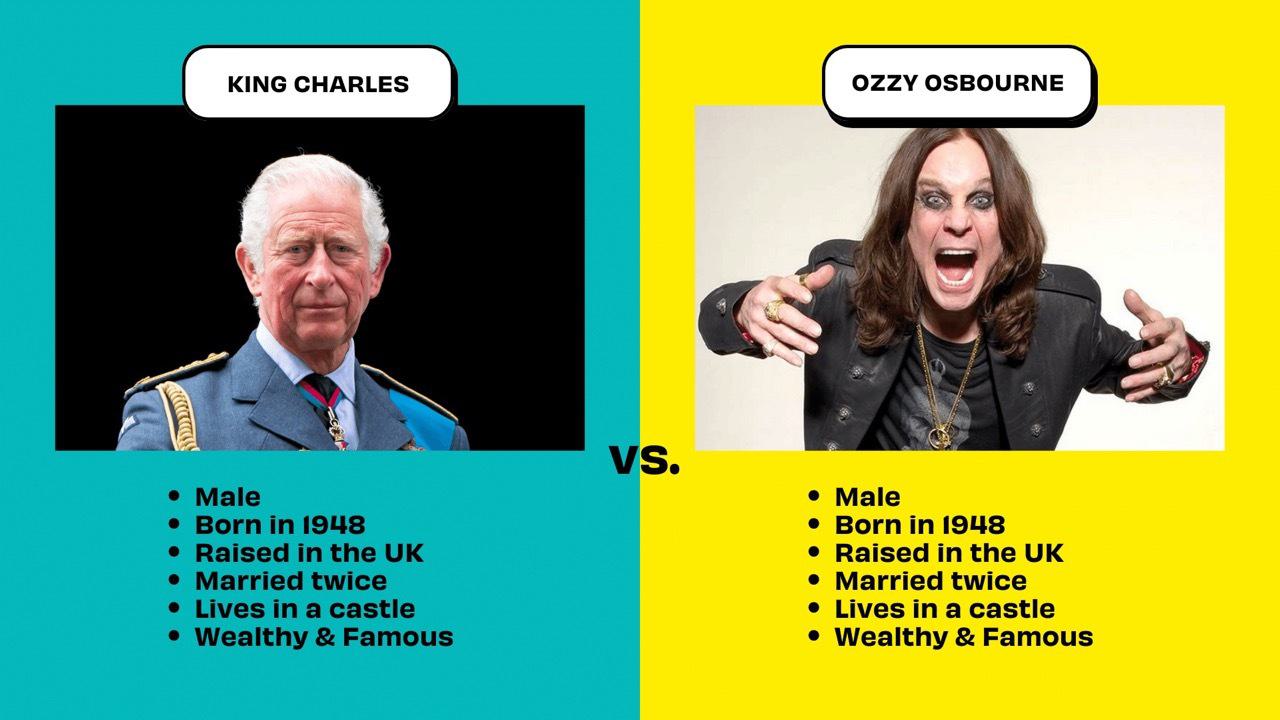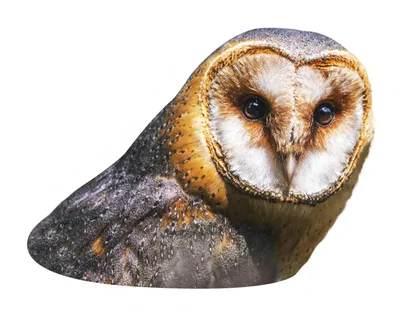want some cookies?
We use cookies to make your browsing experience amazing.

Wow, what a year we have had. We’ve won awards. We've worked with so many wonderful companies. We've had a LOT of fun. And we’ve recorded lots of episodes of the Marketing for Learning podcast.
And with that in mind, we think it's time for a lil' round-up, a quick snackable summary of all the key tips from our most listened to podcasts of 2023. So, grab a notepad and pen because we think this might be the best thing you’ve read all year (yeah… we’re super humble ‘round here!)
TIP 1: STOP BLAMING THE TECH
We could have written this at the end of any recent year, because this habit does not seem to be leaving the L&D space. As an industry, L&D are over-reliant on technology to solve their challenges! Something goes wrong and Learning thinks... “Oh, it must be our learning platform. People can’t navigate it. It’s clunky. Not the most modern, etc etc.” Which usually results in jumping back on the 'buying a new learning platform' merry-go-round.
It's no secret that we're in a economic muddle and things are hard for L&D right now. Our budgets are being cut. Stakeholders want to see ROI and impact. Behaviours need to change. Performance needs to improve. Engagement needs to increase. The list is endless... but tech isn’t going to solve any of those problems, is it?
Most of these problems come down to one thing: a lack of audience awareness and engagement. So how do we improve this? With marketing, duh 😉
Talk to your employees. Communicate with them and market your learning offering to them. Often audiences don't actually know that learning – or the platform it sits on – exists. And if they don’t know it exists, how can they engage with it? So let them know! Make your learning offering resonate with them and watch your engagement rise. Without spending a LOT of money on a new platform. #YoureWelcome
🎧 Listen to the full episode now: The marketing for learning® course taster.
TIP 2: DEVELOP YOUR 'HUMAN' SKILLS
Alright, before we get stuck in with this one... what is a human skill?
"Sometimes known as “soft skills,” they constitute our ability to relate to one another and refer to aspects such as empathy, compassion, and authenticity. People with strong human skills can form deeper connections with colleagues and customers. This ultimately serves as a strong foundation for positive workplace performance in terms of innovation, adaptive thinking, collaboration, and more." – Abbey Lewis, Harvard Business Publishing.
These skills aren't necessarily taught in traditional education. But they're the skills that make us relate to other humans on a much deeper level. And that’s what marketing is about isn’t it? Relating to and connecting with our audiences, building relationships with them, getting their butts a’movin.
And it's that kind of connection that L&D are after, right? Especially when tackling the aforementioned challenge of engagement. And that's why we believe L&D must focus on developing their own human skills if they want real impact. In fact, there are three key human skills we think L&D should focus on:
- Empathy. To have more meaningful discourse with your target audience, you've got to understand their pain points, challenges, wants, needs and fears. And how can you develop that insight without empathy? (Rhetorical question… ‘cause you can’t!) So take your own personal thoughts and opinions away, and hone in on the feelings of your audience if you want to really make an impact with your marketing for learning.
- Communication. You can’t be a marketer without impeccable communication skills. Simples. And great communication is fundamental to great marketing. Think of all the great marketers you know, they all communicate with empathy, compassion and excitement, don’t they? It’s all about choosing the right emotion and the right vibe for that moment in time. So perfect your communication skills for more L&D impact.
- Creativity. Creativity is the backbone of the marketing industry. And it's not just about coming up with catchy adverts or witty slogans. It’s about thinking outside the box, solving problems from a different angle, trying to find new solutions to age old problems. Those kinds of innovative ideas don’t come from nowhere... they come from someone who truly has a creative mindset.
Every L&Der I know has these skills already, but it's time they were unlocked. If you want to make marketing for learning work in your organisation, think about the human skills you already have, and how you can apply them in everything you do, particularly when you're marketing your learning interventions,
🎧 Listen to the full episode now: The human skill of marketing
TIP 3: PUT PEOPLE AT THE ❤️ OF EVERYTHING YOU DO
Everything L&D does should come back to one thing... their target audience. The purpose of the learning function is to help develop individuals, facilitate learning and push people to new heights. Right? But sometimes, L&D forgets that.
As a function, L&D is pulled from pillar to post. The C-Suite is asking for one thing, managers in the business are asking for another, and at the bottom our people are saying “hey, can someone pay attention to me?”
We talk about this so much at MAAS, in fact our whole first session on the marketing for L&D masterclass is about marketing mindset and customer centricity. And we think 2024 should be the year L&D hone the skill of customer centricity a bit more.
You may be thinking "Well I already do that... This is such a rubbish tip!" But you’d be surprised at the amount of people we speak to that are humble enough to say, "You know what, I think I’ve taken my eye off the ball there. I think I’ve slipped into that old narrative, I’ve stopped putting my audience first." So if you know that this is you, take a second to remind yourself that your audience is the most important person in the room. Have them at the heart of everything you do. Check the work you’re doing, are you really championing your target audience? If not, stop, pivot, and put them front and centre.
🎧 Listen to the full episode now: People, Personas and Marketing Permission
TIP 4: CREATE YOUR LEARNER PERSONAS. NOW!
We truly believe learner personas are the backbone of phenomenal marketing for learning. So what is a learner persona?
This is our definition of a learner persona: “A learner persona is a semi-fictional representation of your target audience, combining market research, qualitative and quantitative feedback from employees and YES! some assumptions to provide L&D teams with an actionable audience segment designed to improve both learning design and communication approaches.”
Simply put, without personas we’re just shoving information out and hoping that it resonates with somebody. And isn’t it time that L&D finally put this ‘spray and pray’ approach to bed?
But with so much data in L&D, you might be asking “why on earth do we need personas?”. We know their job title, their job role, their age and their location. We know SO much about them. Can’t we just target based on that?
No. No you can’t.
Why? An example you may have seen us speak about before is King Charles and Ozzy Osbourne. They couldn’t be any more different, could they? But demographically, they’re almost identical. Both males born in 1948, raised in the UK, married twice, live in castles, both wealthy and famous.

But, they’re very different people, aren’t they? Their intrinsic motivations in life are probably (*cough* definitely) incredibly different. And that's a case and point as to why we don’t just target based on demographics. Because if we do, we’ll end up sending both of these people the same message which won’t resonate with either of them. And that would just be a waste of time... right?!
🎧 Listen to the full episode now: Creating kick-ass learner personas
TIP 5: DEVELOP YOUR L&D BRAND PROMISE
A brand promise is a pledge you’re making to your target audience. So to consumers, customers or clients. And for L&D, it'll be your "learners" (even though we hate that terminology!) Your brand promise is a statement that tells people what you’re going to deliver. Simply put, it’s an expectation you’re setting for your team.
So ask yourself:
- What kind of experience can your people expect when they’re interacting with you?
- What standard are you going to hold yourself to?
- What is the purpose behind your team?
Essentially for L&D a brand promise defines who you are as a learning function. It unites you as a team, and will keep you (and the wider organisation) on track and true to your values. And if you want to be the trailblazing team we know you can be... we think a brand promise is a great place to start.
🎧 Listen to the full episode now: What is your brand promise?
TIP 6: CREATE AN L&D POSITIONING STATEMENT
Ok... this could have been grouped with tip 5, but that would have ruined the format of the post 🤷🏻♀️ So going hand-in-hand with your L&D brand promise should be your L&D positioning statement.
Your positioning statement will influence absolutely everything you do in your L&D function and holds you accountable. Not only does it tell us what you're promising, it clearly defines how you're going to do it.
Because in L&D, you are likely offering a service to your people that they might be able to find elsewhere. They might find themselves on platforms like LinkedIn Learning or any of the other external learning platforms available at our fingertips. But you want them to engage with you and the content that you have created for them. So you need to market your offering effectively to them, right? And your positioning statement will help tailor all of your marketing, messaging, communication, visual design, branding, everything, to the needs of your audience.
So I recommend taking some time to try creating your positioning statement using the template from HubSpot, and see how it brings your team together with one united purpose.
🎧 Listen to the full episode now: Defining your L&D positioning statement
TIP 7: STAY FRONT OF MIND
Ever heard of Pavlov's dog? No? Well settle in, because this ones a bit of a history lesson, so settle in for a story…
Ivan Pavlov was around in 1904, and he was a Nobel Prize winner for his work on digestive processes. (Exciting stuff, hey?!) But while he was doing that work around the Nobel prize he started to note that his canine subjects would begin to salivate when an assistant would enter the room. So when they would come into the room to provide food/snacks/treats to monitor the digestion of the dogs, they were basically anticipating the snack, therefore would salivate accordingly. Over time, Pavlov realised that the dogs were salivating whether the assistant had a snack or not. He realised salivation was a reflexive response. A reflexive response means it occurs automatically in response to a specific stimulus and it’s not under conscious control. The dogs didn’t realise they were doing it! So Pavlov theorised that salivation was a learned process – an act of classical conditioning.
This is quite a fascinating phenomenon that is used in advertising to this day. Essentially we are trying to connect with our audiences in an autonomic way and create a physiological response.
Now, this tip isn't encouraging you to brainwash your learners, or condition them to do certain things. But we do think there are clever ways that we can transfer the idea to learning.
We talk a lot about how we can use brands and visual markers to create more object permanence in our learners’ brains. We talk about how we can reach people and connect with them on an emotional level through campaigns, imagery, and copywriting. So how can we use all of those things to get people to have a subtle response to your communications or your learning? This could mean when they see your logo/brand they immediately associate it with learning. If they’ve had positive experiences, that may well be enough to prompt a desire to go and find a solution to a problem they have.
🎧 Listen to the full episode now: Pavlov’s Dog & Modern Advertising
TIP 8: ENSURE YOUR LEARNING IS EVIDENCE INFORMED
Evidence-informed learning is spoken about a lot nowadays. But when we had Mirjam Neelen on the podcast, she explained to us why it is so important. So tip number 8 is to make sure your learning offering is evidenced informed.
But what is evidence-informed learning? Well, there are three types of evidence that you should use to inform design decisions:
Experience and expertise.
Systems, data and stakeholders
Evidence from the learning sciences.
Of course, in the field of L&D, our learning sciences are ‘softer’ than in fields such as medicine, but we should still use the learning sciences to influence our decision making. But using a combination of these three data-points will ensure your learning interventions are evidence-informed.
But isn’t that just instructional design? Yeah we thought the same, so Mirjam helped us understand that a little more too. She said that yes, instructional design does gather evidence, from SMEs and the business and so on. For example, trying to understand what the learning need is, or what existing information is available. But sometimes it overlooks that final part – evidence from the learning sciences.
By using the learning sciences, and creating evidence-informed learning, we’re thinking about how to trigger an audience into getting involved. Making that learning experience stick. Making them want to come back time and time again.
Sounds fairly similar to a campaign approach to marketing to us! (In fact, Ash asked Mirjam about that too - but if you want to know more you’ll have to listen to the full podcast episode!)
🎧 Listen to the full episode now: Mirjam Neelen & evidenced-based strategies
TIP 9: DON'T FORGET ABOUT UX DESIGN
We talk so much about putting the audience at the heart of everything you do in marketing for learning. And UX design – in learning, marketing, ecommerce and any other field you can think of – is doing exactly that. But when it comes to marketing and L&D, it is essential to make sure that what you’re asking your users to do at certain points, or how you’re nudging them towards things, actually makes sense to them from their point of view.
It’s the practice of challenging people. Pushing back and asking “Yeah that makes sense to you, but will it make sense to the audience? Will they care?”
To get this right, you might want to map out your audience journey, highlighting trigger points, where you’re driving people too, where they’re coming from, what noise is around them – to ensure they’re focusing on the right things at the right time. It’s also important here to not assume positive intent. In learning, there really is a happy path and an unhappy path. But most importantly, you need to think about how we get them back on track when they drop into an unhappy path.
Ultimately, UX design in learning is a lot of thinking about and exploring human behaviour, all with the mindset of championing your end user. And it's a really, reallllly important thing to remember throughout your design and development stages.
🎧 Listen to the full episode now: UX design in learning & development
TIP 10: REMEMBER YOUR LEARNING OFFERING IS A PRODUCT
Both Ash and Han have thought this for a while, L&D is lacking the commercial skills for the business to take it seriously. And when Nick Shackleton-Jones came on the podcast – he absolutely echoed their sentiment (much to their relief!)
For all too long, L&D have overlooked the importance of commercial skills, marketing and product-mindsets. Imagine if your marketing team did this…
They came up with a new product, the DingleGob3000. They don’t know what this product does for the customer… they didn't bother to do any market research or audience analysis. They don’t quite know the value it delivers or the impact it will make. But it’s easy. Easy to develop, easy to push out, easy to tell their bosses “hey look I did this!”
So they do it. They make the DingleGob3000. They push it out to their target audience… no, not by a multi-channel, engaging marketing strategy. Instead they just send one email. Saying “Here’s the link to the DingleGob3000!” They don’t know anyone they’re emailing. They’re just pushing it out and hoping for the best.
There’s probably around 15% of the thousands of people that received the email that click on the link – out of sheer curiosity.
And what does their curiosity lead them to? A fancy product? Top of the range? A nice slick eCommerce website?
No. It’s an LMS that looks like it was developed in the 90s. Leading them to a PowerPoint deck with a quiz at the end. Wowzers.
Sounds ridiculous right? Well the truth is, this is what most L&D teams are still doing, right now in 2023. We think 2024 is the time to stop that. Now is the time to start thinking of your learning offering as a product. If you want more inspo, listen to the full ep with Nick. We promise, it’s not all about the DingleGob3000.
🎧 Listen to the full episode now: Storytelling with Nick Shackleton-Jones
TIP 11: PLAY YOUR PART IN THE EVP
Lifelong learning is an economic imperative” - The Economist.
Learning is no longer a nice-to-have. Something luxurious to do. It’s a must. (We’d argue it’s always been this way, but we know not everybody agrees!) In a fast moving world now, L&D is probably the best way to attract great people and show that you are a people focused business. And with a talent crisis on our hands – it’s safe to say that all organisations want to attract the best people, right?
So when we speak about the EVP (employee value proposition), L&D must have a role. And we’re certain that will become all the more important in 2024 and beyond.
Now is the time for L&D to become really clear about what they’re delivering to the business and to its people. We must be confident to describe the value we add. We must know how we impact the bottom line. We must be able to articulate our contribution to the EVP.
🎧 Listen to the full episode now: Future L&D skills and the role they play in building a valuable EVP
TIP 12: BE CAUTIOUS OF THE GEN AI HYPE
Gen AI. The hot topic of 2023, right? But did you know that some organisations are putting a pause on using generative AI in learning? Because of data privacy. If you’re using any form of Gen AI with company specific data – it’s a risky business. So in our podcast with Egle Vinauskite, she told us that it’s only when the benefits out weigh the risks, that she imagines L&D will witness the full impact of Gen AI.
In fact she said “AI is potentially so powerful, and in six months from now it’ll be increasingly more powerful. If you have the skills, or someone else has the skills to create some best practice. This is when the benefits might start outweighing the risks.”
So our final tip is this... be cautious of jumping in too fast with the Gen AI hype. Yes, it's going to change the working world forever. But no, it might not be right (or safe) for your L&D function today. Upskill yourself, research, investigate... but only take the leap when you're certain that the benefits outweigh the risks for your people and organisation.
🎧 Listen to the full episode now: Gen AI and L&D with Egle Vinauskite
So, that's it, our 12 key takeaways from 2023. From human skills, to Gen AI, to classical conditioning. So what's stopping you, you have everything you need to improve your marketing for your L&D offering! Let's get on with it.









